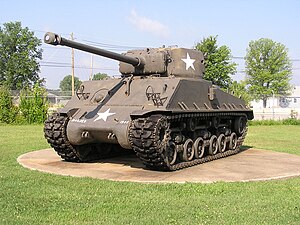Souvenir Sheet: Eternal Memory of the Valiantly Fallen (Transnistria 2012)
Eternal Memory of the Valiantly Fallen (Transnistria 2012)
14 October (Transnistria ) within release Memorials of Memory of Transnistria goes into circulation Souvenir Sheet Eternal Memory of the Valiantly Fallen face value 7*T No Face Value
| Souvenir Sheet Eternal Memory of the Valiantly Fallen in catalogues | |
|---|---|
| Colnect codes: | Col: MD-PMR 2012.10.14-08 |
Souvenir Sheet is horizontal format.
Top marginal text: Memorials of Memory of Transnistria.Also in the issue Memorials of Memory of Transnistria:
- Stamp - Chapel of St. George the Victorious face value T;
- Full Pane - Chapel of St. George the Victorious face value 10*T;
- Souvenir Sheet - Eternal Memory of the Valiantly Fallen face value 7*T;
- Stamp - Memorial of Glory - Wall of Memory face value T;
- Full Pane - Memorial of Glory - Wall of Memory face value 10*T;
- Stamp - Memorial of Memory and Sorrow face value T;
- Full Pane - Memorial of Memory and Sorrow face value 10*T;
- Stamp - Monument to the 55th Podolsk Infantry Regiment face value T;
- Full Pane - Monument to the 55th Podolsk Infantry Regiment face value 10*T;
- Stamp - Monument to the Cossack Arrow face value T;
- Full Pane - Monument to the Cossack Arrow face value 10*T;
- Stamp - State Coat of Arms of PMR face value T;
- Stamp - State Flag of PMR face value T;
Souvenir Sheet Eternal Memory of the Valiantly Fallen it reflects the thematic directions:
A building or edifice is a structure with a roof and walls standing more or less permanently in one place, such as a house or factory. Buildings come in a variety of sizes, shapes and functions, and have been adapted throughout history for a wide number of factors, from building materials available, to weather conditions, to land prices, ground conditions, specific uses and aesthetic reasons. Buildings serve several needs of society – primarily as shelter from weather, security, living space, privacy, to store belongings, and to comfortably live and work. A building as a shelter represents a physical division of the human habitat (a place of comfort and safety) and the outside (a place that at times may be harsh and harmful).
A church building, often simply called a church, is a building used for Christian religious activities, particularly worship services. The term in its architectural sense is most often used by Christians to refer to their religious buildings, but it is sometimes used (by analogy) for buildings of other religions. In traditional Christian architecture, the church is often arranged in the shape of a Christian cross. When viewed from plan view the longest part of a cross is represented by the aisle and the junction of the cross is located at the altar area. Towers or domes are often added with the intention of directing the eye of the viewer towards the heavens and inspiring church visitors. Modern church buildings have a variety of architectural styles and layouts; many buildings that were designed for other purposes have now been converted for church use; and, similarly, many original church buildings have been put to other uses. The earliest identified Christian church was a house church founded between 233 and 256. During the 11th through 14th centuries, a wave of building of cathedrals and smaller parish churches occurred across Western Europe. A cathedral is a church, usually Roman Catholic, Anglican, Oriental Orthodox or Eastern Orthodox, housing the seat of a bishop.
A coat of arms is an heraldic visual design on an escutcheon (i.e. shield), surcoat, or tabard. The coat of arms on an escutcheon forms the central element of the full heraldic achievement which in its whole consists of shield, supporters, crest, and motto. A coat of arms is traditionally unique to an individual person, family (except in the United Kingdom), state, organisation or corporation.
A flag is a piece of fabric (most often rectangular or quadrilateral) with a distinctive design that is used as a symbol, as a signaling device, or as decoration. The term flag is also used to refer to the graphic design employed, and flags have since evolved into a general tool for rudimentary signalling and identification, especially in environments where communication is similarly challenging (such as the maritime environment where semaphore is used). National flags are patriotic symbols with varied wide-ranging interpretations, often including strong military associations due to their original and ongoing military uses. Flags are also used in messaging, advertising, or for other decorative purposes. The study of flags is known as vexillology, from the Latin word vexillum, meaning flag or banner.
A monument is a type of structure that was explicitly created to commemorate a person or event, or which has become relevant to a social group as a part of their remembrance of historic times or cultural heritage, due to its artistic, historical, political, technical or architectural importance. Examples of monuments include statues, (war) memorials, historical buildings, archaeological sites, and cultural assets. If there is a public interest in its preservation, a monument can for example be listed as a UNESCO World Heritage Site. The Palgrave Encyclopedia of Cultural Heritage and Conflict gives the next definition of monument:
A tank is an armoured fighting vehicle intended as a primary offensive weapon in front-line ground combat. Tank designs are a balance of heavy firepower, strong armour, and battlefield mobility provided by tracks and a powerful engine; their main armament is often mounted within a turret. They are a mainstay of modern 20th and 21st century ground forces and a key part of combined arms combat.






